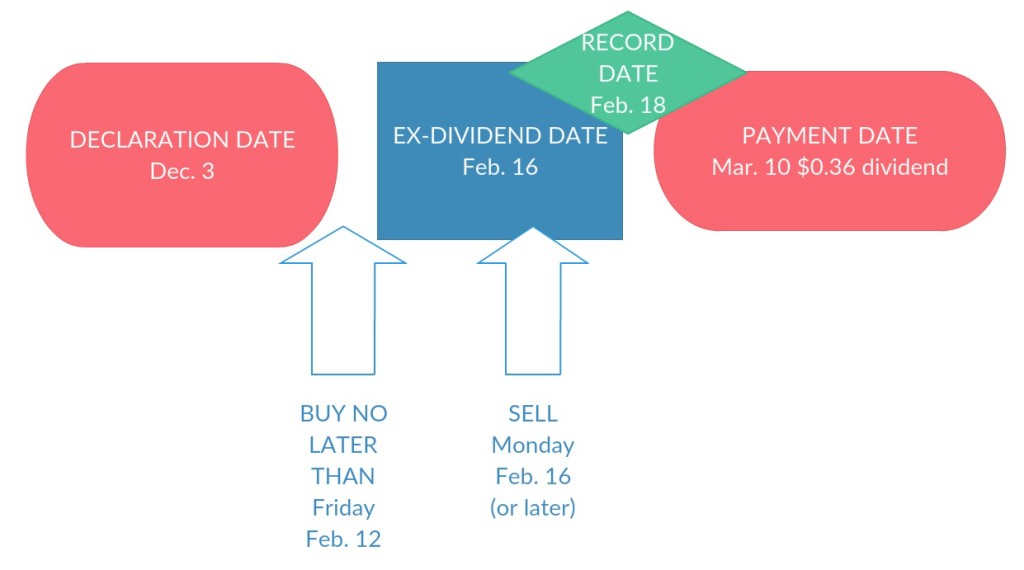Dividend Capture – Get Dividends Practically Every Day
The dividend capture strategy is one that has been employed for years by dividend junkies. The idea is to only hold a stock long enough to get a dividend and then sell it and buy another stock and do the same thing over again.
While in theory the stock should go down by the amount of the dividend on the ex-dividend date, in reality that is not always the case. There may be other market forces pushing the stock upwards.
Most stocks don’t just trade for a flat amount all quarter. It is not normal for a stock to trade at $20 per share, then build up say 1 cent a day for 90 days, then pay out a $0.90 dividend at the end of the quarter, and revert back up to $20.
The stock market is much more volatile than that, and dividend capture investors are counting on some upward pressure on the stock to compensate for the decline in the share price after the dividend is paid.
How Dividend Capture Works
Using the example of Microsoft, on Dec. 3, the stock was trading at $53.81 per share.
They declared a $0.36 per share dividend on that date. You could wait all the way until Friday, Feb. 12 to buy a share of Microsoft (it was trading at $50.14 on that date).
Now that you are entitled to the dividend, you could sell it as early as Monday, Feb. 16 (it was trading at $51.09 on that date).
You would then receive the dividend on Mar. 10, even if you no longer owned the stock. This was a great result for the investor; holding the stock for just one trading day resulted in $0.36 in dividends and $0.95 in gains on the sale of the stock.
Keep in mind that this is an anomaly, and usually the share price drops on the ex-dividend date. You are hoping to capture a large enough dividend to offset the drop in share price.

Taxes and Trading Costs are a Factor
Investors buying a stock to capture a dividend are going to look to liquidate the stock as soon as possible once the ex-dividend date hits.
While the may end up holding the stock a few extra days, they typically are not going to hold the stock for one year in order to gain capital gains treatment of the sale.
So any gains on the sale of the stock AND any dividends are likely going to be taxed like regular income. For a high income earner, this could be 37% on the Federal level plus state income taxes.
Another factor is that you will start racking up commission costs due to the frequency of trades; although this is much less of an issue since most online brokers have moved to free online trades.
You will want to use an online broker that has low or zero commission costs and does not take advantage of you when it comes to things like spreads, execution time, and letting high frequency traders front run your trades.
Other Considerations
This is not a passive strategy.
It requires deciding which types of dividend-paying companies to buy and trading in and out of stocks around ex-dividend dates. There are various websites that track declared dividends and ex-dividend dates.
There is no guarantee that the strategy works; some say that this is too obvious to yield an above market return, and comes with high trading costs that will diminish the return.
Also, unlike passive investing, all gains are short-term and you don’t get the benefit of watching the share price appreciate without having to pay taxes because there was no taxable event (a sale).
Instead of buying and holding, you are constantly buying and selling shares.





